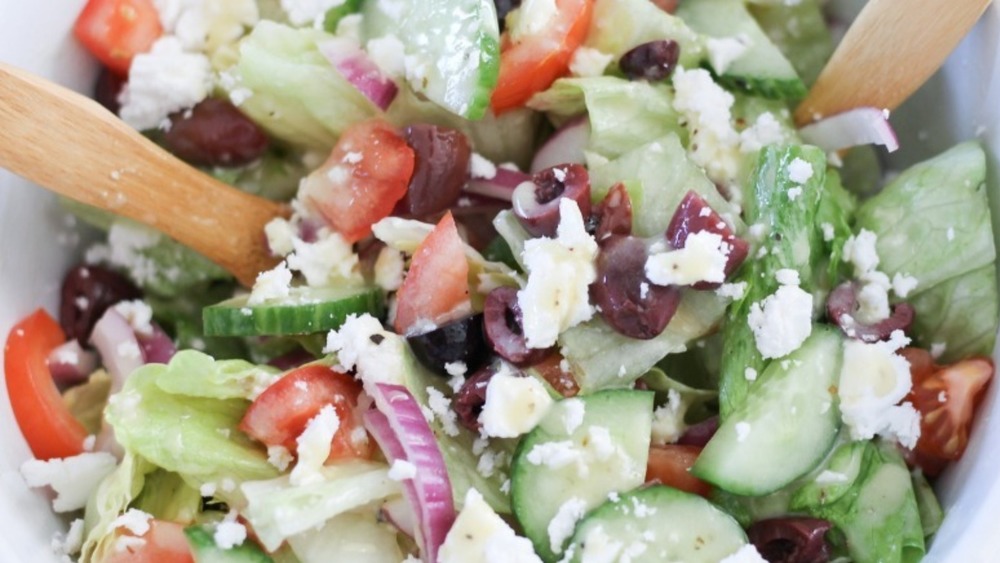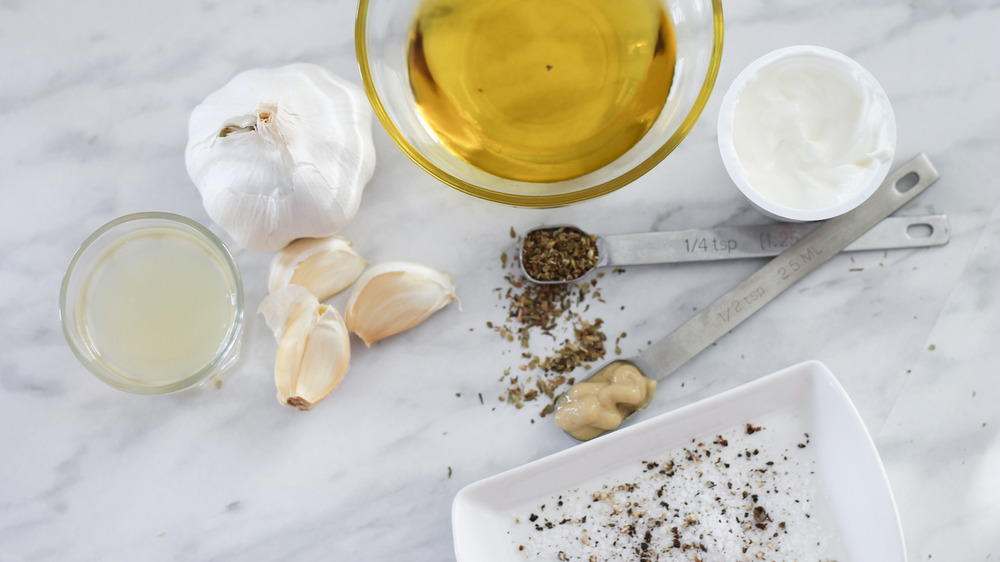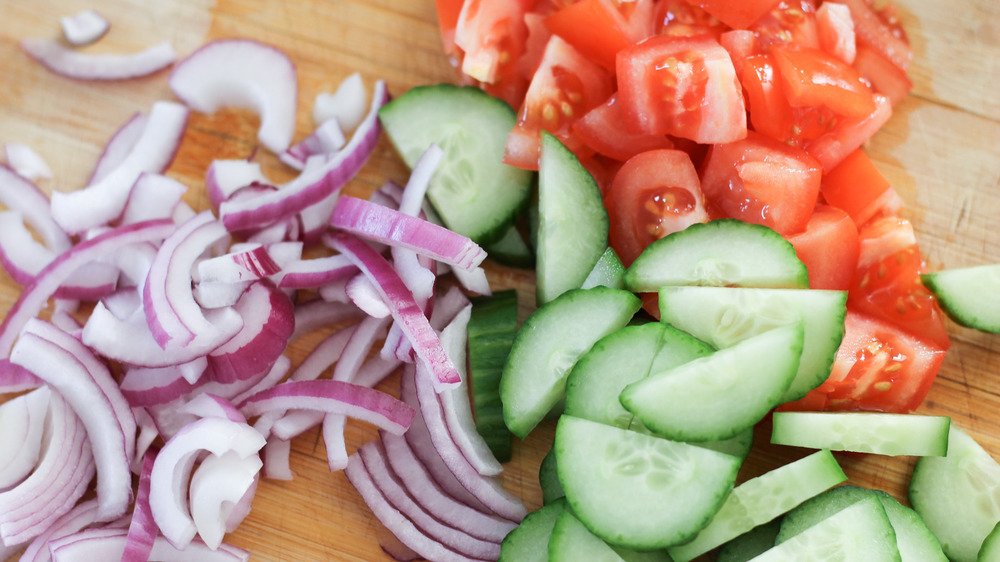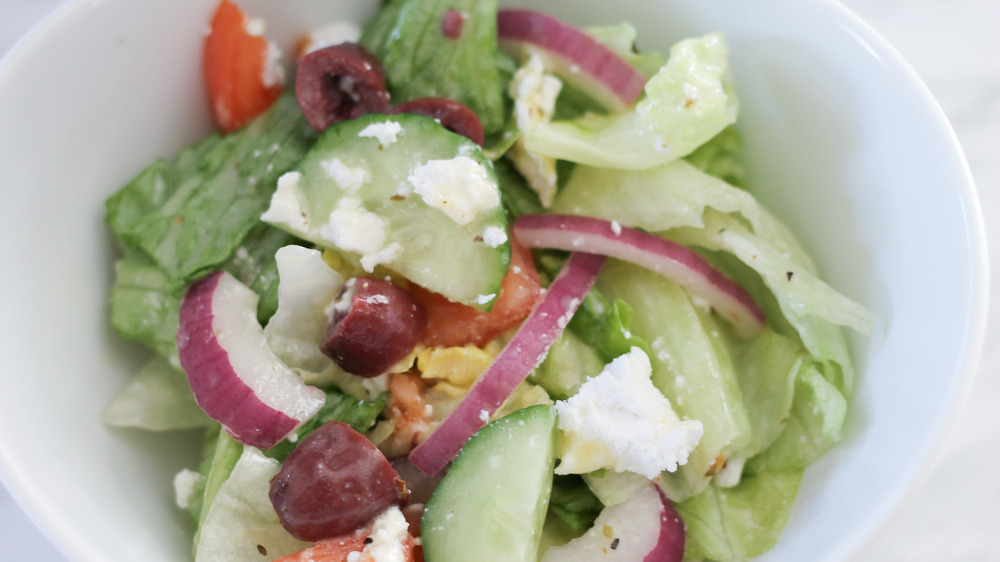Greek Salad Recipe
Looking for the perfect accompaniment to, as chef and food writer Melissa Olivieri of The Olive Blogger says, "pizza, pasta of any kind, really any kind of chicken dish"? Then you're in the right place when you're thinking Greek salad. As Olivieri says: "It's a great light side that goes with so many things. You can also have Greek salad as it is for a nice filling lunch." And maybe have some toasted bread on the side.
This healthy Mediterranean dish is a staple of diners, casual restaurants, and finer cuisine spots alike, and once you see how simple it is to make your own Greek salad from scratch, you'll surely add your own kitchen to that list. The only "secret" to making a great Greek salad is to use produce that's as fresh as possible and to only dress the portion you are about to eat. Olivieri says: "Don't dress the entire salad if you won't be eating it all, [as] it will get soggy within a few hours."
With that in mind, you can do all the prep work at one time, then do what Olivieri does and store your dressing in one jar, your "washed and prepped lettuce in [another] container, and all the chopped toppings in another." Then, you can put it all together when you're ready to eat.
Whether served as side or main course, you can't go wrong with this recipe. So let's go ahead and make it!
Make the dressing for your Greek salad, then chill it
Greek salad is one of those dishes where the flavor of multiple ingredients can shine through with no one flavor dominating. You taste the olive, the cheese, the onion, and of course, all of it is tied together and enhanced by the dressing. To make a proper Greek salad dressing, you need garlic, good-quality olive oil, Dijon mustard, white balsamic vinegar, lemon juice, sour cream, dried oregano, kosher salt, and some freshly ground pepper to taste.
Now, here's how you make the dressing for the Greek salad: Combine all of those ingredients in a jar, shake it up well, and yeah, you're done. Pop the dressing in the fridge, and shake it again before serving. It's that easy!
Wash and chop the veggies for your Greek salad
Olivieri says that you should begin this Greek salad recipe by cleaning all your produce. Getting all the water off your lettuce can be hard, so you may want to use a salad spinner here. Clean and chilled vegetables will ensure the best taste and crunch here. Now, to prepare vegetables, cut the tomatoes into half-inch pieces, slice the cucumber into quarter-inch half moons, and cut the red onion into thin slices. Olivieri recommends that you separate the onion slices with your fingers so they don't clump together in your salad.
Next, roughly cut the lettuce into wedge pieces, and then chop it into smaller sections. Then roughly chop olives, or you can halve them or even leave them whole if you prefer. Finally, crumble the feta using clean fingers or a fork. At this point, all the veggies (and cheese) are prepped but still kept separate.
Assemble your Greek salad in layers, then serve
Assemble your Greek salad in layers to ensure there are toppings and dressing evenly spread throughout. You shouldn't toss or stir this salad because that can result in the tomatoes and olives settling the bottom and the lettuce piling on top.
Place a couple of handfuls of chopped lettuce in a bowl and top that with about a quarter of the tomatoes, olives, cucumbers, onion, and feta cheese, and then pour over about a quarter of the dressing before mixing. Repeat until bowl is full, and then finish off the top layer with remaining vegetables and crumbled feta. Sprinkle on a bit more pepper and a pinch of salt if you want, then serve your salad with pizza, pasta, chicken, toasted bread, soup, or anything else you're craving.
Greek salad directions
This healthy Mediterranean dish is a staple, and once you see how simple it is to make your own Greek salad from scratch, you'll make it at home too.
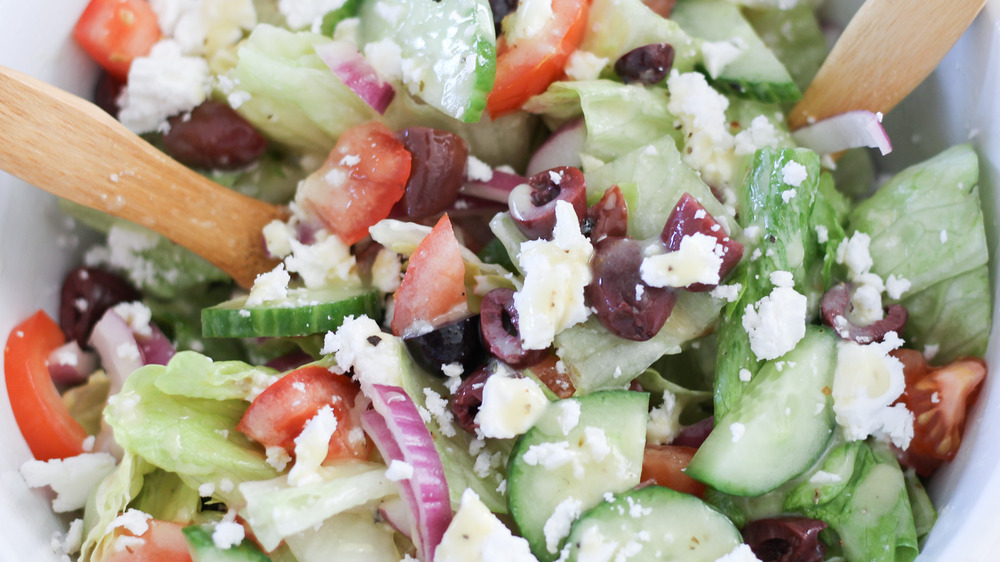
Ingredients
- 1 head iceberg lettuce
- 1/2 large seedless cucumber
- 1/2 large red onion
- 2 tomatoes on the vine (or equivalent grape or cherry tomatoes if you prefer)
- 1 cup pitted Kalamata olives
- 1/3 cup feta cheese
- 1 clove garlic, minced or grated
- 1/2 cup good-quality olive oil
- 1/2 teaspoon Dijon mustard
- 3 tablespoons white balsamic vinegar
- 2 tablespoons lemon juice
- 2 tablespoons sour cream
- 1/4 teaspoon dried oregano
- 1/2 teaspoon kosher salt
- freshly ground pepper
Directions
- In a small mason jar, mix the garlic, olive oil, Dijon mustard, white balsamic vinegar, lemon juice, sour cream, oregano, salt, and pepper. This is your dressing.
- Begin making the salad by thoroughly washing all produce. Use a salad spinner for drying the iceberg lettuce once chopped.
- Cut tomatoes into half-inch pieces, cut cucumber into quarter-inch half moons, and cut the red onion into thin slices (separate with fingers so they don't clump together). Roughly cut the lettuce into wedge pieces and then chop into smaller sections.
- Roughly chop olives (or you can leave whole if you prefer), then crumble feta using fingers or a fork.
- Assemble the salad in layers to ensure there are toppings and dressing throughout. Take a couple of handfuls of lettuce and top with about a quarter of the tomatoes, olives, cucumbers, onion, and feta cheese then pour over about a quarter of the dressing before mixing. Repeat until bowl is full, and then finish off the top layer with remaining vegetables and crumbled feta.
Nutrition
| Calories per Serving | 371 |
| Total Fat | 34.8 g |
| Saturated Fat | 6.8 g |
| Trans Fat | 0.0 g |
| Cholesterol | 14.2 mg |
| Total Carbohydrates | 13.6 g |
| Dietary Fiber | 3.6 g |
| Total Sugars | 6.9 g |
| Sodium | 625.2 mg |
| Protein | 4.1 g |
